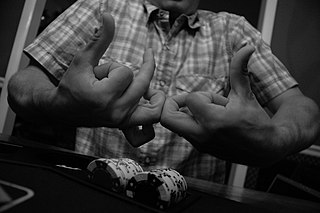
The Bloods are a primarily African-American street gangs which was founded in Los Angeles, California. The gang is widely known for its rivalry with the Crips. It is identified by the red color worn by its members and by particular gang symbols, including distinctive hand signs.
Yardie is a term often used, particularly within the Caribbean expatriate and Jamaican diaspora, to refer to people of Jamaican origin, though its exact meaning changes depending on context. The term is derived from the Jamaican patois for “home” or "yard". The term may have specifically originated from the crowded "government yards" of two-storey government-funded concrete homes found in Kingston and inhabited by poorer Jamaican residents, though "yard" can also refer to "home" or "turf" in general in Jamaican patois.

New Jack City is a 1991 American crime action film based on an original story and written by Thomas Lee Wright and Barry Michael Cooper, and directed by Mario Van Peebles in his feature film directorial debut. The film stars Wesley Snipes, Ice-T, Allen Payne, Chris Rock, Judd Nelson, Bill Cobbs, and Van Peebles. Its plot follows Nino Brown, a drug lord in New York City during the crack epidemic, and Scotty Appleton, an NYPD detective who vows to end Nino's rise to power by going undercover to work for Nino's gang.
The Black Mafia, also known as the Philadelphia Black Mafia (PBM), Black Muslim Mafia and Muslim Mob, was a Philadelphia-based African-American organized crime syndicate. The organization began in the 1960s as a relatively small criminal collective in South Philadelphia, known for holding up neighborhood crap games and dealing in the illegal drug business, but at its height of operation in the early 1970s until about the early 1980s, it managed to consolidate power and control a large portion of criminal activity in various African-American neighborhoods throughout Philadelphia and the Delaware Valley, including South Jersey, Chester, and Wilmington. In addition to drug trafficking, burglary, and armed robbery, the Black Mafia was also engaged in traditional organized crime activities such as political corruption, extortion, racketeering, prostitution, loansharking, number running, and other illegal gambling rackets.
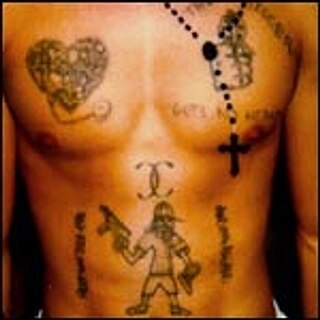
The Crips are an alliance of street gangs that is based in the coastal regions of Southern California. Founded in Los Angeles, California, in 1969, mainly by Raymond Washington and Stanley Williams, the Crips began as an alliance between two autonomous gangs, and developed into a loosely connected network of individual "sets", often engaged in open warfare with one another. Its members have traditionally worn blue clothing since around 1973.
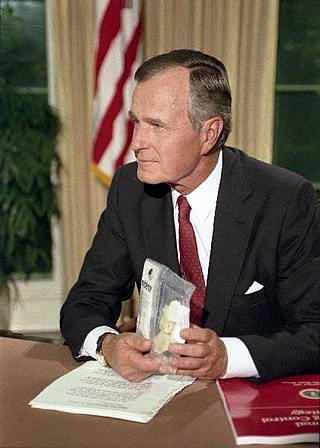
The crack epidemic was a surge of crack cocaine use in major cities across the United States throughout the entirety of the 1980s and the early 1990s. This resulted in a number of social consequences, such as increasing crime and violence in American inner city neighborhoods, a resulting backlash in the form of tough on crime policies, and a massive spike in incarceration rates.
In the late 19th and early 20th centuries, African American organized crime emerged following the first and second large-scale migration of African Americans from the Southern United States to major cities of the Northeast, Midwest, and later the West Coast. In many of these newly established communities and neighborhoods, criminal activities such as illegal gambling, speakeasies and were seen in the post-World War I and Prohibition eras. Although the majority of these businesses in African American neighborhoods were operated by African Americans, it is often unclear the extent to which these operations were run independently of the larger criminal organizations of the time.
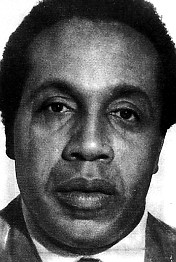
Frank Lucas was an American drug lord who operated in Harlem, New York City, during the late 1960s and early 1970s. He was known for cutting out middlemen in the drug trade and buying heroin directly from his source in the Golden Triangle in Southeast Asia. Lucas boasted that he smuggled heroin using the coffins of dead American servicemen, as depicted in the feature film American Gangster (2007), which fictionalized aspects of his life. This claim was denied by his Southeast Asian associate Leslie "Ike" Atkinson.

Banged Up Abroad is a British documentary/docudrama television series created by Bart Layton that was produced for Channel 5 and that premiered in March 2006. Most episodes feature stories of people who have been arrested while travelling abroad, usually for trying to smuggle illegal drugs, although some episodes feature people who were either kidnapped or captured while they were either travelling or living in other countries. Some episodes have featured real-life stories that first became well known when they were made the subject of a film: films that have been 're-made' in this way include Midnight Express, Goodfellas, The Devil's Double, Argo, Mr Nice and, to a lesser extent, Casino. A few episodes have focused on undercover infiltrations of criminal syndicates by law enforcement agents or individuals recruited by them.
Hakeem Abdul-Shaheed, also known as Midget Molley, is an American convicted drug dealer and organized crime leader. He acquired the nickname 'Midget' from his family, in reference to his short height. He stands at 5'2".
A drug lord, drug baron, kingpin, or lord of drugs is a type of crime boss in charge of a drug trafficking network, organization, or enterprise.

Frank Larry Matthews, also known as Black Caesar, Mark IV and Pee Wee, was an American drug trafficker and crime boss who sold heroin and cocaine throughout the eastern United States from 1965 to 1972. He operated in 21 states and supplied drug dealers throughout every region of the country. The Drug Enforcement Administration (DEA) ranks Matthews as one of the top ten drug traffickers in U.S. history and he is estimated to have had US$20 million in savings.
The US state of Georgia has seen a rise in the number of gangs over recent years, in the main focused on the illegal drug trade.
Barry Michael Cooper is a New York City-born American writer, producer and director, best known for his screenplays for the films New Jack City (1991), Sugar Hill (1994), and Above the Rim (1994), sometimes called his "Harlem Trilogy".
Gang activity and associated crime is a long-standing concern in Denver, Colorado. The city's street gang activity received statewide attention in 1993 when a "Summer of Violence" increased public awareness of gang-related violence and led the state to enact harsh penalties for crime by juveniles. From 1992 to 1995, Denver had 331 murders: 95 in 1992, 74 in 1993, and 81 each in 1994 and 1995 In 1997 The first Gang to ever be indicted out of Colorado was the West Side Ballerz Posse WSBP a Chicano gang that resided in West Denver & branched off in surrounding Adams county in cities such as Commerce, Thornton, Brighton, and Westminster. In 1996, members of the FBI's Metro Gang Task Force (“MGTF”) were investigating suspected gang-related drug activity in Denver, Colorado. Specifically, MGTF was investigating members of the West Side Ballerz Posse whom it suspected were selling controlled substances and engaging in gang-related violence. As part of this investigation, a series of wiretaps were authorized in late 1996 against suspected members of this drug conspiracy. Gang-related crime has continued, as shown by the New Year's Day 2007 drive-by shooting of Broncos cornerback Darrent Williams by members of the Tre Tre Crips, an East Denver street gang. The Crips in the city have several sub-sets such as Tre Deuce (DOD), Tre Foe, 35 Outlaws and the Tre Tre Gangstas. In 2017, the city's police estimated that there were 38,000 gang members in Denver, affiliated with 220 gangs. The Rollin 30s or Tre Tre Crips still have a powerful presence in the Denver area. In 2017 there were an estimated 2000 Bloods and Crips from Denver. These gangs are in various locations including Five Points, East Denver, Commerce City, Englewood, Aurora, North-East Park Hill and Federal Heights. Crips and Bloods have been commonly sighted almost all over Denver, even in the suburbs outside the city.
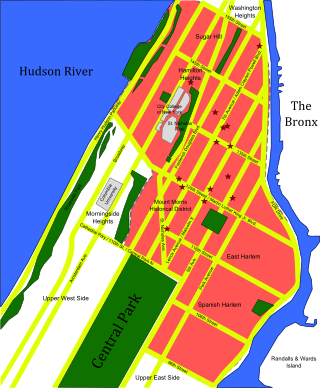
Greater Harlem, in the northern section of the New York City borough of Manhattan, has historically had high poverty and crime rates. Crime in Harlem is primarily related to illicit activities such as theft, robbery, drug trafficking and prostitution. Criminal organizations such as street gangs are responsible for a significant portion of crime, particularly violent crime. The leading cause of death among young black males in Harlem is homicide. According to a survey published in 2013 by Union Settlement Association, residents of East Harlem perceive crime as their biggest single concern. Greater Harlem has one of the highest violent crime rates in New York City despite significant declines from historic highs.
The Rollin' 30s Harlem Crips are a faction, or "set", of the Crips alliance of street gangs. The gang was formed by Belizean American Crips who had moved from South Los Angeles to Belize and then to Harlem, New York.
The Nine Trey Gangster Bloods or Nine Trey Gangsta Bloods (NTG) are a violent set of the United Blood Nation street gang, which is itself a set of the Bloods gang. The gang operates on the East Coast of the United States.
Gregory Woolley was a Haitian-born Canadian mobster associated with the Hells Angels motorcycle club. Woolley was the protégé and bodyguard of Maurice Boucher, a controversial senior Hells Angels leader who led his chapter in a long and extremely violent gang war against the Rock Machine, in Quebec, from 1994 to 2002. Woolley was known in Montreal as the "parrain des gangs de rue".








